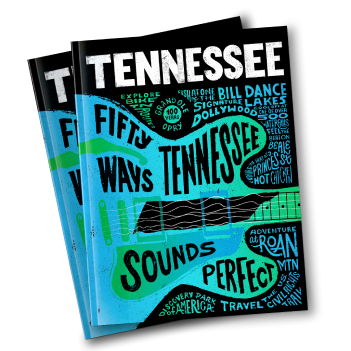Featured in this Article:

Reelfoot Lake
Fishing is phenomenal at the 15,000-acre Reelfoot Lake in Tiptonville, Tennessee. You can catch bluegill, catfish, crappie and largemouth bass. Famous Tennessee fisherman, Bill Dance shares techniques, baits and locations to scout for a memorable fishing trip.
Reelfoot Lake
Historians claim Reelfoot Lake was created in the early 1800s by a series of earthquakes which opened crevices in the earth so deep that the Mississippi River flowed backward to fill them up. Centuries later, the result of the rumbling destruction is a pristine, cypress tree-laden, five-mile lake that is the crown jewel of Northwest Tennessee. Reelfoot Lake is Tennessee's only naturally-made lake. Water temperatures are typically in the upper 70’s to lower 80’s early to mid-June.
Where to Fish on Reelfoot Lake
Bank fishing is limited, but there are several piers on the south shoreline that provide bank fishing opportunity. Reelfoot Lake has four distinct basins connected by channelized ditches and all four are considered great fishing areas with the lower two basins receiving the most pressure. Fishing among the sunken cypress trees or identifying one of the lake's many pockets for some solitary fishing is also common.
Crappie Fishing Technique
Anglers will want to use the spider-rigging technique to catch lots of crappie. This is basically trolling with several poles spread out and held in a rack, typically from the boat’s bow. From above, with poles extended, the boat would resemble a spider walking across the surface. The tactic allows anglers to have many hooks in the water, all maintained at consistent depths while passing over the lake’s sunken cypress forest. Though in many places, above the surface, Reelfoot Lake may look like open water, but there are loads of stumps, logs and other features that crappie love.
Consistency is the key when spider rigging, you want to keep all your baits at the same depth as you troll above submerged structure. Deep is a relative term at Reelfoot. This is not a man-made reservoir, so there are no tremendous depths to be found in much of the lake. This helps anglers better locate the fish. So, use your electronics to find schooling fish and simply present your baits at the level they’re holding. Most often this will also be at or slightly above submerged structures.
Typically, spider-rig anglers have two-hook rigs on each pole. A crappie jig tipped with a minnow is the favorite of most. All the traditional crappie jig colors work, but you may want to experiment with different colors on top and bottom hooks to see if you can fine-tune the crappies’ preference.
Fishing for Bass
Bass fishing at Reelfoot Lake can also be fantastic, too. In summer, anglers often fish pad fields and cypress. Topwater baits among the pads can be great, as can plastic worms and lizards at greater depths. Some anglers prefer heavy jigs so they can fish around the logs and stumps with a slower motion.
Bluegill Fishing Technique
Bluegill most often takes center spotlight in summer at Reelfoot. Bluegill fishing at Reelfoot Lake is considered one of the best in Tennessee with the average size near 0.45 pounds and anglers harvesting between 1.5 and 2 fish per hour. Catch rates by anglers are around 2 fish per hour, so action is pretty steady. Larger bluegill in the half pound to three quarter pound range is seen but not common.
Crickets and worms work on light tackle as well as grizzly jigs (1/32 or 1/64). Bill Dance's personal favorite is a Bass Pro Shops 1/16 oz. Marabou jig with a wax worm and slip float.
All the traditional panfishing methods and baits work, and you can catch a lot of Reelfoot bluegill in a hurry if you locate spawning beds.
Fishing for Catfish
Fishing for catfish is always a good option as historic surveys estimate channel catfish at over 400 pounds per acre. Popular fishing spots include Walnut Log Ditch and Nations Ditch. Reel them in with all traditional catfish baits as well as trotlines, using a No. 6 hook baited with nightcrawlers or stink bait, or even jugging in the Lower Blue Basin during the summer.
Reelfoot Lake is a true natural wonder. It’s where bald eagles soar and the fish are plentiful. It’s always a great place to fish in Tennessee.
The Three Water Spots You Should Fish This Spring in Tennessee
Bill Dance explains where and how top fishermen coax large fish onto their hooks.




















